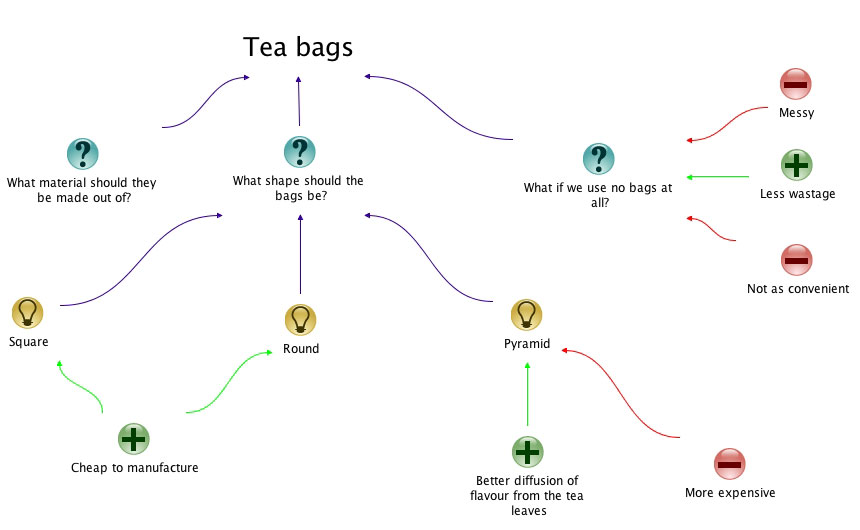Wicked Problems

Introduction
Sometimes design problems are really messy.
Arguably there is no better example of this than architecture and town planning. Imagine having to design a new building or town to accommodate the needs and desires of countless people, with often highly divergent views.
These sorts of problems are difficult to solve. There is no equation to solve such a complex problem.
IBIS
In the 1960s a design theorist called Horst Rittel developed a system called IBIS to help solve these so called ‘wicked problems’.
IBIS is a way of articulating the various issues associated with a design problem.
IBIS was initially conceived as a paper based system. However a graphical notation was created for it in the late 1980s by a researcher called Jeff Conklin. This notation is known as gIBIS, and forms the basis of all current IBIS based tools.
Part of the beauty of IBIS is in its simplicity. An IBIS map consists of a number of nodes, connected together in meaningful relationships. Lets take a straight forward example - tea bags.

A rigorous IBIS map will have at least two answers to every question, with each answer supported by several arguments.
By graphically expressing the problem and solution space in this way it makes it much easier for stakeholders to understand the views of others, which will hopefully help arrive at a stronger, more integrative solutions.
Big deal you may say, but IBIS is more than just a tool - it’s an entire philosophy for approaching design problems.
In order to use IBIS it requires an appreciation that there are multiple stakeholders in a project, and they are likely to have divergent views.
The role of a designer is to arbitrate between these conflicting viewpoints, and arrive at a mutually acceptable solution.
This means thinking of all the people who are effected by the product during its existence, and not just the user of the product.
Furthermore, IBIS is an effective way of dealing with criticism. When a designer has their work criticised it is easy to take personal offence. However, if you take the IBIS view of the world, that criticism is just another point of view which enhances your understanding of the problem domain.
This change in conception can’t be overemphasised. It turns the design process from something defensive, to something inclusive where criticism is not only actively sought, but effectively assimilated and acted upon.
Conclusions
The 21st Century is defined by wicked problems, where there are many different stakeholders with different viewpoints - the most obvious of which is global warming. To have any hope of solving these problems an integrative approach is required, which doesn’t ignore certain viewpoints, but seeks to create the best possible equilibrium between opposing forces, to arrive at an acceptable and effective solution.
Resources
- Popular IBIS software tool - Compendium